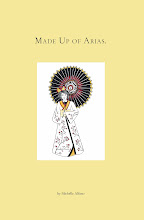
 Falling Man by Don DeLillo (Scribner, 2007)
Falling Man by Don DeLillo (Scribner, 2007)Literally. I was sitting in a Tim Hortons, contemplating this book, waiting out a huge rainstorm last week, and then these two Buddhists (I think), with shaved heads and brightly coloured robes of gold and red, walk in for a coffee and sit down beside me. I began to think how someone with strong religious convictions deals with the nature of evil and the events of 911.
I know what a writer like Don DeLillo does, or tries to do. He tries to crawl into the head of one the 911 survivors, his family and one of the hijackers.
I must confess that I haven't read DeLillo in years but was intrigued by the post-911 theme of his newest book Falling Man. I tried to wade through the literary behemoth Underworld and had to stop in the middle of an interminable baseball game he writes about at around page 70 or so. I was also intrigued by the "Falling Man" documentary (see the photograph above by Richard Drew which inspired the documentary by the same name) which I urge you to watch here or on YouTube. This is the book I hurriedly finished before we went to NYC because I didn't want 911 to be lingering in my thoughts while we were there.
The "falling man" in the novel refers to a performance artist who "recreates" this photograph during the course of the novel before bewildered New York spectators. DeLillo says he was unaware of the title of the photograph when he selected the name of the book which does seem odd considering the notoriety and controversy surrounding it. The origin of the unknown man was written about in Esquire.
The novel dreamily, almost poetically, follows different subplots surrounding those affected by 911. The main characters Keith Neudecker and and his estranged wife Lianne respond quite differently. Keith, a lawyer who was working in the World Trade Centre the day of the 911 attack, manages to escape while injured and walks to the apartment he used to share with his son and now divorced wife Lianne. During the attack, he witnessed the death of a co-worker and friend with whom he played poker regularly. Keith moves about in an almost somnabulistic state and ensconces himself, unasked, with Lianne while he recovers from his physical and psychological injuries.
Temporarily, Keith resumes his role as father and husband but then slowly abdicates that role. He begins a tentative "courtship" of a woman named Florence, another WTC survivor, whose briefcase Keith had impulsively taken from a stairwell while fleeing the crumbling tower. He eventually tours the world playing in professional poker tournaments. Why is unclear, perhaps he does so in homage to the friends lost during 911, particularly the friend whose death he witnessed. It is an odd turn of events in the novel which I don't fully understand the meaning of.
Meanwhile, his wife Lianne angrily confronts, and then assaults, a neighbor in her building who plays music that sounds "middle-eastern", perceiving the music as, at best, insensitive, at worst, aggressive and provocative. She leads a writing group for Alzheimer's patients and literally watches as participants drift away in a cloud of evaporating memory (perhaps a metaphor for Lianne's desire to escape the new reality of a post-911 world in New York). She watches her vibrant, intellectual mother Nina disappear too into illness and death and confronts the possibility that Nina's boyfriend, the somewhat mysterious jet-setting art dealer Martin, whose aggressive anti-American rhetoric might, or might not, indicate that he was a member of a 1960s terrorist group similar to the Baeder-Meinhof gang in Germany.
Periodically, Lianne encounters a performance artist, the notorious "Falling Man", in different parts of the city. The artist suspends himself upside-down in the pose of the "falling man" dressed in business attire, emulating in the famous photograph taken on 911 alarming spectators everywhere he appears.
Their usually reticent son, almost always referred to as "the kid", and two friends covertly scan the skies with binoculars for an unseen enemy named "Bill Lawton", a corruption of the name "bin Laden" which they have overheard, waiting for the inevitable return of the terrorists.
One false note is Keith's recollections of escaping from the tower which the writer recounts at the very end of the novel. Perhaps it is too raw, too fresh a wound for me, even as a mere spectator of 911, but it felt gratuitous, almost obscene. Of course, DeLillo has the right to imagine and write about anything he likes. Personally, having read as much as anyone about the plight of those trapped in the WTC I felt uneasy reading DeLillo's imaginings about their fate. I felt like I didn't need those details to believe in Keith's trauma. His trauma and shock were utterly believable to me, especially in the way he is ferociously protective of Florence but seems to want little from her, only her presence.
But oddly, I did not feel that watching Oliver Stone's film World Trade Centre. I'm trying to analyze the difference in my response. Is it because the two police officers placed by Nic Cage and Michael Pena trapped in the concourse of the building when one of the tower collapses live at the end of the film but thousands of others, like the co-workers of the fictional Keith in Falling Man, did not? More on WTC soon ...
Another section which plucks the strings of my incredulity is the subplot regarding the imagined experiences of one of the 911 hijackers named Hammad who crashes into one of the WTC towers. I think we will have to wait for a sensibility closer to the mindset of the hijackers to have a believable literary rendering of what transpired that day although I admire DeLillo immensely for trying.









No comments:
Post a Comment